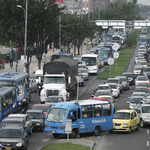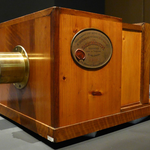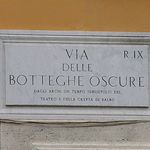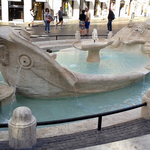Piazza di Spagna
It is one of the most scenographic city places of baroque Rome and one of the inevitable tourist destinations which already converged from the XVIth century. It is 270 metres long and gets more narrow in the centre forming two united triangles on the top.
The first triangle has as its base il Palazzo della Propaganda Fide, the seat of the Assembly established by Gregorio XV in 1622. In front there is a commemorative column of dogma dell'Immacolata Concezione (erected on the 8th of December 1854) ordered by Pius IX (L.Poletti 1856) from the sculptors S.Revelli, C.Chelli, I.Jacometti, A. Tadolini. The column is set on the pedestal ornated by the statues of Isaia, Ezechiele, Mose and David with the statue of Madonna on the top. Every time on the occasion of the festival on December 8 Rome presents the flowers to the Immacolata together with the Pope.
On the left side of the triangle there is the Piazza di Spagna due to A.Del Grande. From the XVII century it is occupied by the Spanish Embassy under la Santa Sede. In front one can find piazzetta Mignanelli with the simple Palazzo Mignanelli.
The second triangle surrounded by the edifices of the XVIIIth century is decorated by the line of 5 high palms.
One can reach the square from the elegant Via Condotti so-called because here the ducts of the Vergin water were passing. This street is necessary to pass through for those who would like to know the modern trends of moda. In the square you immediately can find the scenographic and triumphal Trinità dei monti with the original Fontana della Barcaccia of 1629 on the background. Pietro Bernini and his father Gian Lorenzo Bernini conceived it for Urban VIII (it reminded him the sun and the beers of the Barberini).
In the XIXth century the hotels and inns gave place to the small characteristic restaurants, photo and antiquarian shops which are still numerous near Via del Babuino (the omonimous fountain near Sant'Anastasio dei Greci is one of the statue parlanti)and Via Margutta (according to the folk tradition there was a squire of Morgante, Margutte which gave his name to the street).
In the first century BC the magnificent villa of roman general Lucullo rose up here. The general was famous for his sumptuous banquets. The building occupied the slopes of the hill where now the church of Trinità dei monti
stands with series of terraces connected by monumental stairs.
In 600 the square was called the French square and it was a point of the discussion because of the halberd and harquebus. The discussion was about the rights on the square between the French embassador who possessed the troops in the convent of Trinita dei Monti and the Spanish one who supervised the square from the fortress of Largo Mignanelli.
In 1676 the Pope Innocent XI abolished diritti di quartiere, by his decree and put the end to the war in the square. But the Spanish embassador residing in the position turned the square into the real point of meetings of
the whole qurter. It became a French area with its postal service and it remained autonomous from the Pope's area. The square got called the Spanish square.
In '700 it became the elegant waiting-room in which the European travellers stop under the exotic palms. Joint by Rome on the wave of romantic recalls they got ready to visit the great ruins of the past and the famous Café Greco
in the Via Condotti. It was opened in 1760 and since then received artists, musicians and scholars and still now it preserves partly the refined furnishing. In 800 the square turned from a waiting-room into a lounge-room. All the great persons of the epoch beginning from Dumas to Balzac, from List to Wagner came here.
They sat on the steps. Shepherds and shepherdesses in the coloured dresses descended from the Ciociaria valleys. With their instinctive cunning they made people to pay a lot for drawing pictures of local colors.
Nowadays during fashion parades the models descend the stairs under the lights and reflectors.

 The records of Rome. Big numbers, not always enviable, for a big city.
The records of Rome. Big numbers, not always enviable, for a big city. New Phot-O-Matic section. To spend some time looking at photos (also) of Rome.
New Phot-O-Matic section. To spend some time looking at photos (also) of Rome. The administrative, urban, toponymic and imaginative subdivisions of Rome.
The administrative, urban, toponymic and imaginative subdivisions of Rome. Notice for tourists: in Rome you drink for free. Historical fountains and 'big noses'.
Notice for tourists: in Rome you drink for free. Historical fountains and 'big noses'. Free museums return on the first Sunday of the month.
Free museums return on the first Sunday of the month.